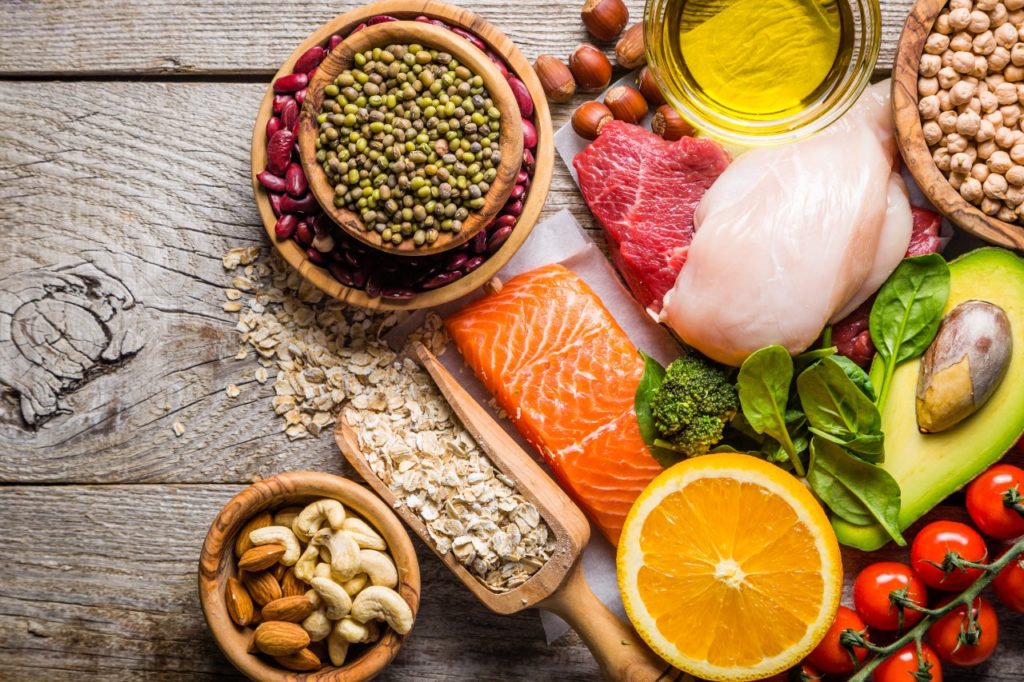Something happens when we choose to use our looks as the primary metric by which we gauge our health. But, being healthy is more than a look. We get only a fraction of the reality of our overall health when we allow the mirror to be our guide and sole measurement. Here at Innova Primary Care, we want to see all of our patients experience their best health. The truth is, health looks different on every body. Reflections of ourselves in a piece of glass do not tell the whole story. It’s natural to want to look and feel your best, however, when we allow the “look” to become “the thing” we may be missing out. With this in mind, let’s take a closer look at ways you can measure your health that goes beyond a number on the scale or the size of your clothing.
Everyone wants to look their best
Being health is so much more than a look! Because health is multifaceted, we cannot give “looking healthy” all the power to frame our judgments of well-being. Why? Because a look does not always equate to health. Take professional bodybuilders for example. Men and women who compete in these competitions spend weeks upon weeks dialing in their nutrition and enduring grueling workouts to achieve a specific “look” for their competition date. This look generally requires both male and female competitors to be at their absolute leanest.
However, this look does not come without a price. Women who drop below a certain body fat percentage may experience amenorrhea, period loss, along with a host of other metabolic issues arising from hormonal disruption. This look is also not sustainable in the long term.
From the outside, these athletes look conditioned and very lean. However, the look doesn’t tell the whole story. The reality is that health is also associated with weight, but weight is not the end all either. You can pursue physique goals AND keep your health metrics in check too. In order to shift our mindsets, let’s discuss other metrics that can give you an inside view into your health: know your numbers – blood pressure, blood sugar, and cholesterol.
Being healthy means
- Blood Pressure
Your blood pressure number indicates your systolic blood pressure and your diastolic blood pressure. The systolic number is the first number you read, the one on top. When your heart pumps blood, the blood flows through the arteries and exerts pressure on the atrial walls. Your systolic blood pressure measures the pressure of blood flow on the arterial wall as the heartbeats.
Diastolic blood pressure is the second number, the one on the bottom. When your heart is at rest blood is still exerting pressure on the arteries. Diastolic blood pressure is the measure of the blood’s pressure on the arterial walls as when the heart is at rest. Systolic and diastolic blood pressure give a picture of cardiovascular health.
The reason it is crucial that you know your blood pressure numbers is because this is the only way to know if you suffer from hypertension. There is a reason why high blood pressure is often referred to as the “silent killer.” The great news is that you can take steps now to lower your blood pressure with lifestyle choices. Ditch the salt, lose excess weight, don’t smoke, decrease or stop alcohol use, and get moving.
- Blood Sugar
Blood sugar levels are a useful tool for tracking your risk for developing diabetes within your lifetime. This metric also helps those who have type 1 diabetes ensure their levels are within a healthy range and allows them to adjust as necessary.
For non-diabetics, a healthy blood sugar range, depending upon last food consumption and time of day, falls somewhere between 70-130 mg/dL. This is information you won’t know unless you have your blood tested which is why tracking this number is vital for your health.
If you have underlying risk factors such as obesity your physician may want to track your blood sugars more often, so keep an open dialogue with your provider.
- Cholesterol
Your body needs cholesterol to assist with making hormones and fat digestion. While the body makes cholesterol on its own, you can also get cholesterol from some of the foods you eat making it important to be mindful of what you consume. Excess cholesterol can line the arteries creating plaque walls which can lead to heart disease and stroke.
Much like high blood pressure, high cholesterol levels are not known without blood work.
For this reason, it is important that you get your cholesterol levels checked from time to time. A cholesterol test measures total cholesterol – 200mg/dL is within the normal range. LDL cholesterol, often referred to as “bad cholesterol” because it may clog the arteries after a build-up over time – 100 mg/dL or less falls within normal. A cholesterol test will also check your HDL cholesterol, referred to as “good cholesterol” because it helps your body do away cholesterol lingering in the arteries. Your body needs at least 40mg/dL of HDL.
Create healthy habits
Now that you’ve gotten a handle on your numbers, let’s take a look at some helpful tools for helping you create healthy habits.
Eating a diet rich in whole foods, healthy fats, and lean meats is a great place to start. You don’t have to make a huge lifestyle overhaul all at once to see the effects either. Start with small sustainable habits and build upon your successes. For example, if you aren’t much of a vegetable eater, try adding a serving of vegetables, roughly one cup, to your evening meal. After a week or two, up your servings.
Water is vital for overall health, yet many report they do not consume enough H2O on a daily basis. While there is no set standard for consumption, a great rule of thumb is half your body weight in ounces of water per day. This means that a 150 person needs approximately 75 ounces of water daily. Your needs may be more depending upon activity levels, temperature, and humidity.
Drinking water and being healthy
Why drink water? There are so many reasons to stay hydrated. Here are just a few:
- Water helps keep constipation at bay
- Keeps your joints safe
- Flushes out toxins
- Keeps you sweating
- Assists your kidneys in flushing out waste from the blood
- Prevents dehydration
- Boosts brain power
- And more!!
If you are struggling to drink more H20, here is a great tip: keep a water bottle handy throughout the day. Sip on your bottle as you sit at your desk or set a timer to drink up on the hour. You won’t regret it.
Get your body moving. Yes, you’ve heard this over and over, but it is still true. Movement is necessary for everyone. You don’t have to crush grueling workouts to make exercise work for you either. The American Heart Association recommends at least 150 minutes of moderate-intensity exercise per week or 75 minutes of more vigorous exercise.
Don’t forget strength training too. As we age, we are more susceptible to muscle and bone loss so lifting weights becomes even more important.
Last, but definitely not least, sleep.
We’ve been conditioned to believe that we should go hard all the time and forego sleep to get things done. However, this line of thinking is just plain wrong. While at rest our bodies repair themselves, our brains consolidate information and assists with hormone regulation. Don’t skimp on sleep. The project can wait.
Being healthy is so much more than a look. Don’t let your desire for a physique come at the expense of your health. Keep track of your numbers. Eat well. Get moving. Make sleep a priority and watch yourself become the best version of yourself possible.






 About
About

 About
About About
About About
About
 About
About About
About

 About
About About
About About
About About
About










